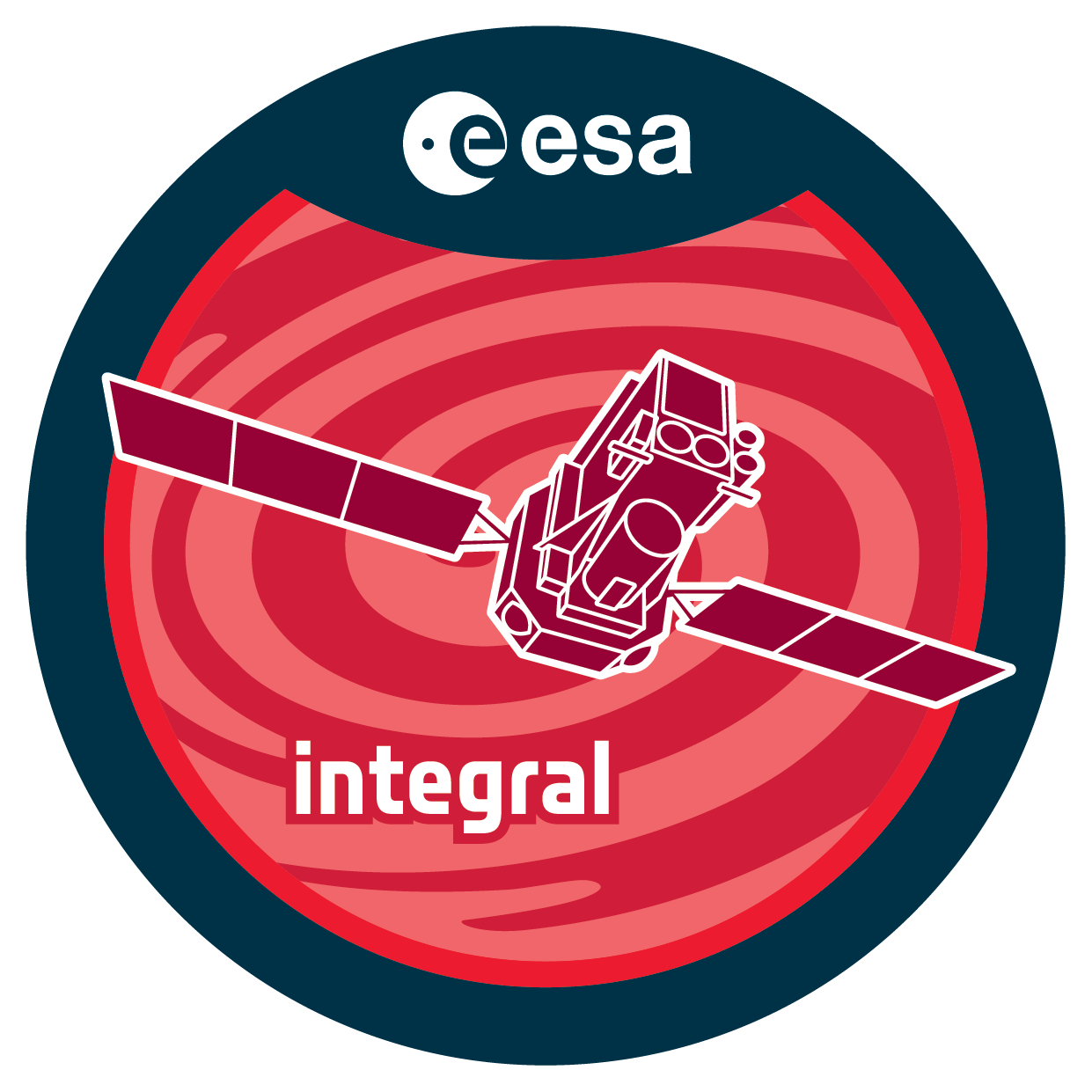| Publications |
- Background modelling for I3-ray spectroscopy with INTEGRAL/SPI - Siegert, Thomas, Diehl, Roland,Weinberger, Christoph,Pleintinger, Moritz M. M.,Greiner, Jochen,Zhang, Xiaoling (2019-06-01) http://ui.adsabs.harvard.edu/#abs/2019A&A...626A..73S
- Broadband X-ray spectra and timing of the accreting millisecond pulsar Swift J1756.9-2508 during its 2018 and 2019 outbursts - Li, Z. S., Kuiper, L.,Falanga, M.,Poutanen, J.,Tsygankov, S. S.,Galloway, D. K.,Bozzo, E.,Pan, Y. Y.,Huang, Y.,Zhang, S. N.,Zhang, S. (2021-05-01) http://ui.adsabs.harvard.edu/#abs/2021A&A...649A..76L
- Burst-induced coronal cooling in GS 1826-24. The clock wagging its tail - Sanchez-Fernandez, C., Kajava, J. J. E.,Poutanen, J.,Kuulkers, E.,Suleimanov, V. F. (2020-02-01) http://ui.adsabs.harvard.edu/#abs/2020A&A...634A..58S
- Chandra-HETGS Characterization of an Outflowing Wind in the Accreting Millisecond Pulsar IGR J17591-2342 - Nowak, Michael A., Paizis, Adamantia,Jaisawal, Gaurava Kumar,Chenevez, Jerome,Chaty, Sylvain,Fortin, Francis,Rodriguez, Jerome,Wilms, Jorn (2019-03-01) http://ui.adsabs.harvard.edu/#abs/2019ApJ...874...69N
- Diffuse Galactic emission spectrum between 0.5 and 8.0 MeV - Siegert, Thomas, Berteaud, Joanna,Calore, Francesca,Serpico, Pasquale D.,Weinberger, Christoph (2022-04-01) http://ui.adsabs.harvard.edu/#abs/2022A&A...660A.130S
- Gamma-Ray Emission of 60Fe and 26Al Radioactivity in Our Galaxy - Wang, W., Siegert, T.,Dai, Z. G.,Diehl, R.,Greiner, J.,Heger, A.,Krause, M.,Lang, M.,Pleintinger, M. M. M.,Zhang, X. L. (2020-02-01) http://ui.adsabs.harvard.edu/#abs/2020ApJ...889..169W
- High-energy characteristics of the accretion-powered millisecond pulsar IGR J17591-2342 during its 2018 outburst. XMM-Newton, NICER, NuSTAR, and INTEGRAL view of the 0.3-300 keV X-ray band - Kuiper, L., Tsygankov, S. S.,Falanga, M.,Mereminskiy, I. A.,Galloway, D. K.,Poutanen, J.,Li, Z. (2020-09-01) http://ui.adsabs.harvard.edu/#abs/2020A&A...641A..37K
- IGR J17503-2636: a candidate supergiant fast X-ray transient - Ferrigno, C., Bozzo, E.,Sanna, A.,Jaisawal, G. K.,Girard, J. M.,Di Salvo, T.,Burderi, L. (2019-04-01) http://ui.adsabs.harvard.edu/#abs/2019A&A...624A.142F
- INTEGRAL Observations of Magnetars - Pacholski, Dominik Patryk, Ducci, Lorenzo,Topinka, Martin,Mereghetti, Sandro (2025-01-01) http://ui.adsabs.harvard.edu/#abs/2025AN....34640109P
- New interpretation of the two hard X-ray sources IGR J17503-2636 and IGR J17507-2647 - Sidoli, L., Sguera, V.,Esposito, P.,Sathyaprakash, R.,Ponti, G.,Mondal, S.,Bird, A. J. (2025-01-01) http://ui.adsabs.harvard.edu/#abs/2025A&A...693A..45S
- Robust Inference of Neutron-star Parameters from Thermonuclear Burst Observations - Galloway, Duncan K., Johnston, Zac,Goodwin, Adelle,He, Chong-Chong (2022-12-01) http://ui.adsabs.harvard.edu/#abs/2022ApJS..263...30G
- Searching for orbital period modulation in X-ray observations of the symbiotic X-ray binary GX 1+4 - Klawin, Moritz, Ducci, Lorenzo,Mirac Serim, M.,Santangelo, Andrea,Ferrigno, Carlo,Bozzo, Enrico (2024-12-01) http://ui.adsabs.harvard.edu/#abs/2024A&A...692A..19K
- Sgr B2 hard X-ray emission with INTEGRAL after 2009: still detectable? - Kuznetsova, Ekaterina, Krivonos, Roman,Lutovinov, Alexander,Clavel, Maica (2022-01-01) http://ui.adsabs.harvard.edu/#abs/2022MNRAS.509.1605K
- Spectral analysis of the AMXP IGR J17591-2342 during its 2018 outburst - Manca, A., Gambino, A. F.,Sanna, A.,Jaisawal, G. K.,Di Salvo, T.,Iaria, R.,Mazzola, S. M.,Marino, A.,Anitra, A.,Bozzo, E.,Riggio, A.,Burderi, L. (2023-02-01) http://ui.adsabs.harvard.edu/#abs/2023MNRAS.519.2309M
- SRGA J181414.6-225604: A New Galactic Symbiotic X-Ray Binary Outburst Triggered by an Intense Mass-loss Episode of a Heavily Obscured Mira Variable - De, Kishalay, Mereminskiy, Ilya,Soria, Roberto,Conroy, Charlie,Kara, Erin,Anand, Shreya,Ashley, Michael C. B.,Boyer, Martha L.,Chakrabarty, Deepto,Grefenstette, Brian,Hankins, Matthew J.,Hillenbrand, Lynne A.,Jencson, Jacob E.,Karambelkar, Viraj,Kasliwal, Mansi M.,Lau, Ryan M.,Lutovinov, Alexander,Moore, Anna M.,Ng, Mason,Panagiotou, Christos,Pasham, Dheeraj R.,Semena, Andrey,Simcoe, Robert,Soon, Jamie,Srinivasaragavan, Gokul P.,Travouillon, Tony,Yao, Yuhan (2022-08-01) http://ui.adsabs.harvard.edu/#abs/2022ApJ...935...36D
- 44Ti ejecta in young supernova remnants - Weinberger, Christoph, Diehl, Roland,Pleintinger, Moritz M. M.,Siegert, Thomas,Greiner, Jochen (2020-06-01) http://ui.adsabs.harvard.edu/#abs/2020A&A...638A..83W
- The Broad-lined Ic Supernova ZTF18aaqjovh (SN 2018bvw): An Optically Discovered Engine-driven Supernova Candidate with Luminous Radio Emission - Ho, Anna Y. Q., Corsi, Alessandra,Cenko, S. Bradley,Taddia, Francesco,Kulkarni, S. R.,Adams, Scott,De, Kishalay,Dekany, Richard,Frederiks, Dmitry D.,Fremling, Christoffer,Golkhou, V. Zach,Graham, Matthew J.,Hung, Tiara,Kupfer, Thomas,Laher, Russ R.,Mahabal, Ashish,Masci, Frank J.,Miller, Adam A.,Neill, James D.,Reiley, Daniel,Riddle, Reed,Ridnaia, Anna,Rusholme, Ben,Sharma, Yashvi,Sollerman, Jesper,Soumagnac, Maayane T.,Svinkin, Dmitry S.,Shupe, David L. (2020-04-01) http://ui.adsabs.harvard.edu/#abs/2020ApJ...893..132H
- The efficiency of nuclear burning during thermonuclear (Type I) bursts as a function of accretion rate - Cavecchi, Y., Galloway, D. K.,Goodwin, A. J.,Johnston, Z.,Heger, A. (2020-12-01) http://ui.adsabs.harvard.edu/#abs/2020MNRAS.499.2148C
- Unveiling the short and faint X-ray transient nature of IGR J17419-2802 - Sguera, V., Sidoli, L. (2024-10-01) http://ui.adsabs.harvard.edu/#abs/2024A&A...690A.260S
|

